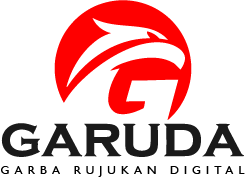THE DYNAMIC IMMERSION SOFTWARE: TEACHING ENGLISH VOCABULARY FOR YOUNG LEARNERS
DOI:
https://doi.org/10.22460/eltin.v3i1.p%25pAbstract
The ability in mastering vocabulary holds an important part in the process of learning a language including English. By analogy, English is a weapon whereas vocabulary is the bullet. It will be useless for someone who has a sophisticated weapon without having a great number of bullets. Hence, mastering vocabulary in a language is very important thus emerge techniques or method to master vocabulary. One of the teaching method is Dynamic Immersion Method (DIM). Therefore the purpose of this research is to analyze the process of mastering vocabulary using DIM applied in Rosetta Stone computer software, in one of Elementary schools in Cipatat, Kabupaten Bandung Barat and to know their perception toward the use of it. There are 21 students from the 4th grade who become the participants of this research. In the process of collecting data, the writer uses observations and interview to see the process of using DIM and the students’ perception to the use of it and then analyzes elaborately based on the purpose of this research. . It was found that DIM in this study is considered successful because it enables students not only to memorize the words in English better but also to learn English vocabularies in meaningful context. The topic discussed in each slide is within the young learners’ world. Thus, the teaching of vocabulary in Dynamic Immersion software into certain extent is successful because the material might be interesting, the learning environment seems enjoyable, the period is relatively short and the material could attract young learners to learn vocabulary better. In terms of young learners’ perception, the data revealed that the students perceive positively.Keywords: Vocabulary, Dynamic Immersion Method, Technology, Young LearnersReferences
Brewster, J &Ellis, G. (2000). The Primary English Teacher’s Guide. England: Pearson Education Limited
Brown, H. D. (2001). Teaching by Principles: An Interactive Approach to Language Pedagogy. 2nd Edition. United Kingdom: Longman
Cameron, L. (2001). Teaching Language to Young Learners. United Kingdom: Cambridge University Press
Canning, W.C. (2000). Teaching Language to Young Learners. United Kingdom: Cambridge University Press.
Elizabeth. (2010). Methods of Teaching English. Discovery Publishing House.
Hakim, F. (2009). The Implementation of the Interactive Learning Media in Teaching Speaking to Young Learners. A Research Paper. English Department of Indonesia University of Education (UPI).
Harmer, J. (2001). The Practice of English Language Teaching. Edinburgh: Pearson Education.
Mora, R.A. (2010). An analysis of the literacy beliefs and practices of faculty and graduates from a preservice english teacher education program. A Dissertation. University of Illinois at Urbana-Champaign.
Pinter, A. (2006). Teaching Young Language Learners. United Kingdom: Oxford University Press
Rodgers, T.S. (2001). Language Teaching Methodology. [online]available at: http://www.cal.org/resources/digest_pdfs/rodgers-methods-paper.pdf. [May 3, 2013]
Rosetta Stone Official Website. (2013). [Online] Available at www.rosettastone.com, [ January 20, 2013.]
Saville-Troike, M. (2006). Introducing Second Language Acquisition. United States of America: Cambridge University Press
Schultz, C.D. (2006). Timing is Everything: Using Videos. Article: Library Media Connection. Available at: http://online.sagepub.com/. Accessed on April 16th, 2011.
Skills Development Centre (Linguistics). (2010). Method. [Online]. Available at: www.dpaoc.org. [December 30, 2013]
Stempleski, S,. & Tomalin, B. (1990). Video Action: Recipes for Using Video in Language Teaching. Great Britain: Cambridge University Press.









